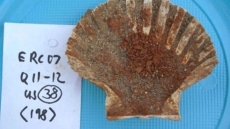Golf courses are prime habitats for ticks, the tiny bloodsucking creatures, says a new study.
Ticks like to feed at the boundaries between the woods and open spaces - the kind of settings found in golf courses.
"Golf courses are the perfect habitat for ticks. This is because people on golf courses scare away the animals that usually prey on small rodents, so these tick-harboring rodents flourish," said Gregory Owens of the School of Health Sciences and Practice at the New York Medical College in the US.
In the study, Owens and his colleagues surveyed 29 golfers at a course in New York, where Lyme disease, an infection carried by certain ticks, is native.
Nearly three-quarters of the golfers said they had found a tick on themselves after golfing, and 24 percent said they had been diagnosed with Lyme disease in the past.
About one third of the golfers said they did not check themselves for ticks after golfing, and 72 percent did not use insect repellent while golfing, found the study.
Because the study was small, more research is needed to see how common tick-prevention behaviours is among golfers, Owens said.
Ticks are most active between April and September, but it is important to take preventive measures year-round.
The study was presented at the American Public Health Association meeting in New Orleans.





